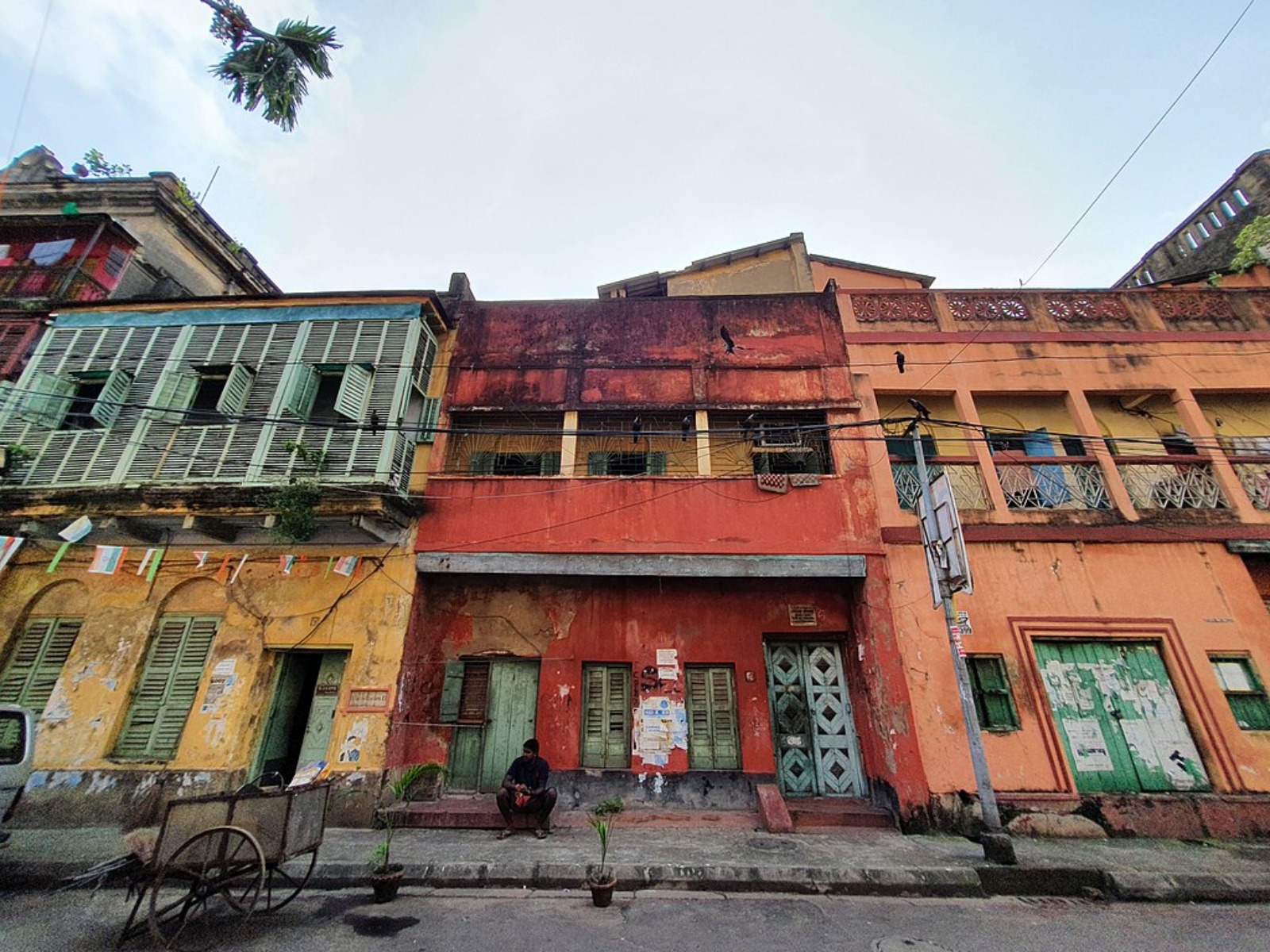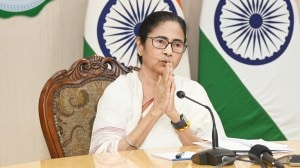The forgotten legacy of Kadambini Ganguly, India’s first woman doctor
Apart from being the first female medical practitioner in India, Kadambini Ganguly also lent her voice to the nationalist movement and it was due to her efforts that the first Age of Conset Act was passed by the British goverment in 1891.
 Despite her many achievements, Kadambini remains largely unrecognised, absent from our textbooks or museums and ignored in the writings of Indian history. (Picture edited by Abhishek Mitra)
Despite her many achievements, Kadambini remains largely unrecognised, absent from our textbooks or museums and ignored in the writings of Indian history. (Picture edited by Abhishek Mitra)As a female doctor and a member of the Brahmo Samaj, Dr Ketaki Bagchi finds many aspects of Kadambini Ganguly’s life journey to be both relatable and inspiring. Much like Kadambini, who was the first woman to practice medicine in India about 140 years ago and a member of the Brahmo Samaj, Dr Ketaki Bagchi too faced her own share of obstacles within and outside her family to pursue a medical career.
Since 2011, when Kadambini’s 150th birth anniversary was celebrated, Dr Bagchi has been spending much of her time learning more about this pioneer in Indian medicine, only to be dismayed by the absence of any memorials honouring her. In January this year, Dr Bagchi drew up a petition, asking West Bengal Chief Minister Mamata Banerjee to establish or rename an existing medical college after Kadambini. “My target was to get at least 1,000 petitioners before her birth anniversary on July 18,” says Dr Bagchi, adding that she has already surpassed this goal, with over half the signatories being doctors.
Kadambini indeed became a doctor at a time when the field of medicine, both in India and the West, was in essence a male preserve. Through her practice, not only did Kadambini ensure immense progress in the arena of women’s health, but also used her voice and position as one of the very few modern, educated women of her time to drive political consciousness among her gender during the nationalist movement. It is due to her efforts that India got its first Age of Consent Act in 1891. Despite these achievements, Kadambini remains largely unrecognised, absent from our textbooks or museums and ignored in the writings of Indian history. As noted by author and journalist Kavita Rao in her book, Lady Doctors: The Untold Stories of India’s First Women in Medicine (2021), the first women doctors like Kadambini “are hardly household names across India in the way that Sarojini Naidu or Rani Lakshmibai of Jhansi are.”
Medicine only for men
Viewed from the lens of the present, one would perhaps be surprised to note how little care was given to women’s health in the years preceding the 1860s and 70s. Historian David Arnold in his book, Colonising the Body (1993), notes that “the primary arenas of state medicine in the first half of the 19th century, the army, jails, even the hospitals were primarily male domains in which women played little part.”
“In an essentially male-oriented and male-operated system of medicine, women appeared only as adjuncts and appendages to the health of men,” he writes.

It is important to note that the bias against women in medicine was not unique to India. Rao, in an email interview with indianexpress.com, notes that “American and British women also faced difficulties. This was because most universities did not allow women to enrol as medical students.” She cites the example of the 19th century British military surgeon James Barry, “who was found on his deathbed to be a woman.”
“She had pretended to be a man to get admission in medical universities,” Rao notes, adding that “in some cases, such as with the Edinburgh Seven, the University of Edinburgh allowed them in, but changed its mind later and forced them to leave without their degrees.” Edinburgh Seven was the first group of female matriculated undergraduate students at a British University who studied medicine.
 British military surgeon James Barry who pretended to be a man to get admission in university to study medicine (Wikimedia Commons)
British military surgeon James Barry who pretended to be a man to get admission in university to study medicine (Wikimedia Commons)By the late 19th century though, there were a lot of conversations in India around the need for women in medicine. In particular, the European colonisers were concerned about the need to reform the traditional Indian midwives or dais. “In the absence of female doctors, women in childbirth had to depend on the midwives alone, who were not trained. Consequently, mortality during childbirth was very high and there was an urgent need for female doctors,” says Mousumi Bandopadhyay, associate professor of History at Sivnath Sastri College in Kolkata and author of Kadambini Ganguly: The Archetypal Woman of 19th century Bengal (2011).
Arnold in his book notes that as European women doctors and missionaries learned more about the “crude and often dangerous techniques” of the midwives, their activities were freely labelled as ‘barbaric’. Consequently, Lady Dufferin, the then Vicereine of India, set up the Dufferin Fund in 1885 with the view to improving women’s health in India. Though progressive in its objective, it also happened to be biased towards European women doctors and missionaries alone and soon became a barrier for Indian women aspiring to be doctors.
The struggle for medical education
Kadambini was born in 1862 in Bhagalpur, Bihar. Her father, Brajkishore Basu, was a headmaster of a school and a stalwart of the Brahmo Samaj movement, which would eventually have a big role to play in shaping Kadambini’s medical career. The Brahmos were progressives and staunch believers in women’s education, but they were divided about the type of education to be given to women. Rao in her book notes that as per the Brahmo view of things, “The Bengali gentlewoman was supposed to be educated, but not so educated that she forgot her place.” As she explains in the interview, “Many believed that women should be educated mostly to be wives and mothers, rather than for their own sake.”
There were some among the Brahmos though who felt differently. These included Kadambini’s father and his friend Durgamohan Das. It was the school founded by them, the ‘Hindu Mahila Vidyalaya’, where girls were taught Maths and Science and were asked to communicate in English.
Kadambini and her peer Sarala Das were the only two girls in their school who aspired for higher education. Calcutta University had to make special arrangements for their entrance examination, which was the first time that women were allowed to take it. Although she passed the exam with a merit, a bigger challenge awaited her. There was no college for women’s higher education in Calcutta at the time. It was the Bethune School which came to her rescue as they decided to recruit special teachers for higher education only for the sake of Kadambini.
Kadambini completed her BA from Bethune in 1882 and became the first woman graduate in Bengal along with Chandramukhi Bose. Rao in her book points out that Bethune’s support for the two women was noteworthy, “given that Oxford only allowed women to graduate with a full degree in 1920”.
By then Kadambini had already begun considering a medical degree, although it is not known how she came to entertain the idea. This too was a far-fetched dream since the Calcutta Medical College (CMC) did not have any provision for allowing women students.
At this time Kadambini had been married to Dwarkanath Ganguly, also a Brahmo, who was earlier her teacher and almost two decades older than her. Historians say that many among the Brahmos were against this marriage, mainly because of the age difference but also several among the progressives were concerned that Kadambani might drop out of her education after marriage and give up on her career pursuits. As it turned out, not only did she remain determined, Dwarkanath’s persistent support was also instrumental in ensuring her entry into the Calcutta Medical College.
 The Calcutta Medical College did not have any provision for admitting female students at the time when Kadambini aspired to be a doctor. (Facebook/Calcutta Medical College)
The Calcutta Medical College did not have any provision for admitting female students at the time when Kadambini aspired to be a doctor. (Facebook/Calcutta Medical College)
Apart from her husband, the editorials of several progressive Bengali newspapers of the time also came in her support in the fight against the CMC for admission. When the acting principal of the hospital, R Harvey wrote a letter strongly establishing his opposition against having female students on the grounds that it “was likely to have a demoralising influence upon the students of both sexes,” the Brahmo Public Opinion leapt into Kadambini’s support.
Finally, it was the Lieutenant Governor of Bengal, Augustus Rivers Thompson, who stepped in and ensured that the medical college opened its doors to women.
Practising as a lady doctor
Kadambini graduated from CMC in 1886. Two years later, she was appointed doctor at the Lady Dufferin Women’s Hospital. In the same year, Anandibai Joshi of Bombay Presidency also graduated as a doctor. She had travelled to America to pursue medicine. However, she died of Tuberculosis a few months after her graduation and could not practise medicine. Consequently, it is Kadambini who is widely regarded as the first woman medical practitioner in India.
The fact that there was an urgent need for women doctors at the time was evident from the large number of patients who sought out Kadambini once she started practising. However, she would still be subjected to deep-rooted societal prejudices against women medical practitioners. Bandopadhyay narrates an incident from Kadamiani’s life that stood out for her. “It so happened that she was visiting a patient to deliver her baby and soon after the delivery was asked by the family to have a meal before leaving. However, Kadambini was asked to eat along with the domestic help of the house and also to clean the area afterwards,” she says.
There was also another challenge she faced. That of racial bias in favour of European women doctors of the time. The Dufferin Fund was established with the objective to “furnish every district, however remote, with a supply of highly trained female doctors.” By this time a large number of women had graduated as doctors in Britain but were unable to procure jobs there due to the inherent bias against women in the profession. Frustrated at the lack of opportunities they turned towards India where new avenues had been opened up by the Dufferin Fund.
Consequently, nearly all women doctors in India at the end of the 19th century were Europeans, while Indians merely provided cheap labour. Kadambini, who had been denied the charge of a ward at the Lady Dufferin Women’s Hospital, was clearly vexed about the situation when she wrote a letter to a local newspaper.
“By the present arrangements, English medical women, though they may not at first possess higher qualification than their Indian sisters, will soon acquire much better skills by performing hospital duties,” wrote Kadambini, as cited by Rao in her book.
Realising the limitations of the system, Kadambini decided to pursue another degree, this time from Britain. In 1893, she graduated with a passing score from the University of Edinburgh as the only one among 14 women sitting for the exams. Things changed dramatically for her when she returned to India, as she got appointed as superintendent at the same hospital where she worked earlier, along with a letter of encouragement and support from Lady Dufferin herself.
A few years later though, Kadambini started a private practice of her own, which she continued till the last day of her life in 1923. Among the long list of patients she treated was also the queen mother of the royal family of Nepal. Kadambini is known to have saved her life and, in return, the queen had showered upon her a large number of gifts and jewellery. Speaking about the surgery she performed on the day she breathed her last, Bandopadhyay says that the amount she received as remuneration was used to pay for her funeral.
A life in politics and the legal system
The Indian National Congress was founded on 28 December 1885, and right from the onset, Dwarkanath Ganguly rallied for the inclusion of women in its sessions. Finally, the 1889 session of the Congress had six women, Kadambini being one of them. She moved the vote of thanks at the session and was hailed by Annie Besant as being a “symbol that India’s freedom would uplift India’s womanhood”.
Thereafter, she organised the Women’s Annual Conference in Calcutta in 1906 in the aftermath of the Partition of Bengal. Two years later, in 1908, she organised and presided over a meeting at Calcutta for expressing solidarity with the Satyagraha workers at Transvaal, South Africa. As noted by BK Sen, member of the research council in Indian National Science Academy, in an article in the Science Reporter, “She (Kadambini) took the initiative to form an association to collect money for helping the workers.” The conditions of the labourers in the tea gardens of Assam as well as the women labourers in Bihar and Odisha’s coal mines are other issues of social relevance to which Kadambani lent her voice.
“Even though her political contribution was limited, she used her stature and voice as a female doctor to ensure empowerment of women,” says Dr Sangeeta Chatterjee, Assistant Professor of Law at Bankura University. “As a doctor, she was able to come in contact with the innermost quarters of women’s lives and was therefore better suited to understand their issues.”
Dr Chatterjee points out that it was due to Kadambini’s efforts that the British government had implemented the first Age of Consent Act in India in 1891. The government had introduced a bill in 1890 to raise the age of consent for sexual intercourse for all girls in India, both married and unmarried. Kadambini was then appointed to carry out a survey and submit a report in this regard. “Owing to early marriage and sex girls were suffering from serious bodily injuries in their private parts, which were not even treated by the medical practitioners, because male doctors were not allowed to check the female patients,” Dr Chatterjee explains in her article Kadambini Ganguly and women empowerment in 19th century India, adding that Kadambini had treated many such young girls. It was on the basis of her report that the Age of Consent Act 1891 was passed.
A forgotten hero
Despite the glorious legacy left behind by Kadambini, very little has been done to remember her work. It was only in 2015 that the neonatal ward of the Calcutta Medical College was named after her. That apart, in 2020, two Bengali TV shows on the life of Kadambini were broadcast. Dr Chatterjee says that it was these two serials that inspired her to conduct research on the life of Kadambini.
Bandopadhyay says that one challenge in writing the life history of Kadambini is that she left behind very less written material, apart from a few odd letters. Speaking of the absence of any memorial dedicated to Kadambini, Bandopadhyay states “one cannot just blame the government for it. Even other institutions like the Calcutta Medical College, from where she graduated as the first female doctor, had provided me with no cooperation when I had approached them while doing my research.”
 Residence of Kadambini Ganguly (Wikimedia Commons)
Residence of Kadambini Ganguly (Wikimedia Commons)
Dr Bagchi, who is busy collecting signatures for her petition to the chief minister, says about the collective lack of effort in preserving the memory of Kadambini. “Just look at the dilapidated condition of Kadambini Ganguly’s residence in Bidhan Sarani. It has almost been demolished while waiting to be marked a heritage building. No one is doing anything about it.,” she says. “Had it been in England, they would have made a tourist spot out of it.”
Dr Bagchi is equally disappointed at the lack of effort made by the Brahmo Samaj in this regard. She says she had approached the Samaj to put forward a proposal to the West Bengal government asking them to name a medical college after Kadambani. But having not received any response from the Samaj, Dr Bagchi decided to move ahead with a petition by herself. “By then I had concluded she is not just the pride of Brahmo Samaj or of the Medical College,” says Dr Bagchi. “She is very much the pride of Bengal and all of India.”
Further Reading:
Kavita Rao, Lady Doctors: The Untold Stories of India’s First Women in Medicine, Westland Publications, 2021
Mousumi Bandopadhyay, Kadambani Ganguly: The Archetypal Woman of 19th century Bengal, Women Press, 2011
David Arnold, Colonizing the Body: State Medicine and Epidemic Disease in Nineteenth-Century India, University of California Press, 1993
B K Sen, Female Graduate of British Empire: Kadambini Ganguly, Science Reporter, 2014
Sangeeta Chatterjee, Kadambini Ganguly and Women Empowerment in 19th Century India
Sep 12: Latest News
- 01
- 02
- 03
- 04
- 05











































